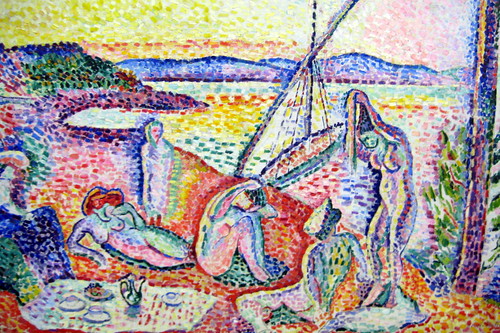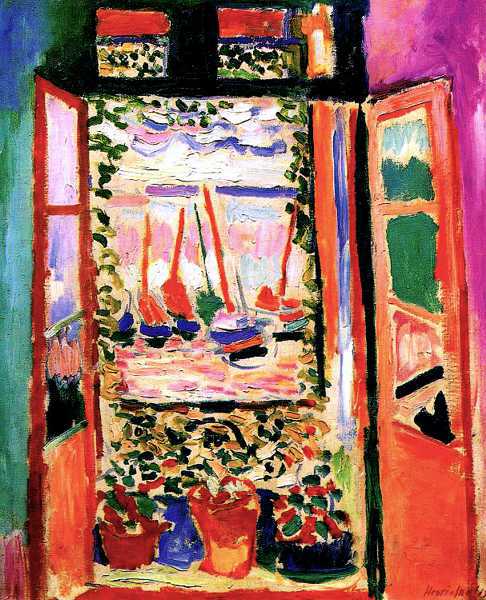Matisse began developing his repertoire of skills first at a standard art academy, but left out of frustration due to the perfectionist style that the academy taught. As time went on, he was influenced by the Pointillist style of Georges Seurat (La Grande Jatte) and Paul Signac (Portrait of Felix Feneon). Matisse's first major work was painted while he was in Saint-Tropez in France.
Lux, calme et Volupe's main feature is bright, vibrant scenery with all seven colors of the rainbow. Within the color and strokes clearly influenced by Pointillism, several nude women are shown lounging in the sunlight. The title of the work comes from an excerpt in Charles Baudelaire's Les Fleurs de Mal (The Flowers of Evil):
Là, tout n'est qu'ordre et beauté,
Luxe, calme et volupté.
There all is order and beauty,
Luxury, peace, and pleasure.
Luxe, calme et volupte.

 La Grande Jatte.
La Grande Jatte.
Matisse showed this work at the Salon d'Automne in 1905, and received a response typical of artists who deviated from traditional academic practices: scornful jeers and biting criticism. Like Impressionism, however, it was at this Salon that the Fauvist movement was coined. Matisse was called a "fauve" (French for "wild beast"), and that was how a new movement was born.
Fauvism was similar to Impressionism; both featured bright and strong brushwork. Fauvism is different, however, in that it does not focus on the reflection of light as much as the sheer spontaneity of color throughout the work: objects are colored in a non-representational style, in that they are not the normal color that one would see in the real world. It would not be farfetched to say that Fauvism was similar to Expressionism as well. Both styles incorporate sinuous and whimsical strokes to project a powerful emotion to the viewer. The main difference between Fauvism and Expressionism was that Expressionism did not have the non-representational color palette of Fauvism.


 The Open Window (1905), also by Matisse. Compared to Edvard Munch's The Scream.
The Open Window (1905), also by Matisse. Compared to Edvard Munch's The Scream.
No comments:
Post a Comment